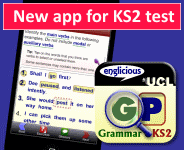Explanation
A clause is a special type of phrase whose Head is a verb. Clauses can sometimes be complete sentences. Clauses may be main or subordinate.
Traditionally, a clause had to have a finite verb, but most modern grammarians also recognise nonfinite clauses.
- It was raining. [single-clause sentence]
- It was raining but we were indoors. [two finite clauses]
- If you are coming to the party, please let us know. [finite subordinate clause inside a finite main clause]
- Usha went upstairs to play on her computer. [non-finite clause]
A clause is a structure which typically expresses a situation such as an action, process or state of affairs (declarative clause), but it can also be used to ask a question (interrogative clause) or issue a command (imperative clause). One or more clauses can make up a sentence. For example, He will find them is a main clause which stands alone as a sentence. By contrast, that he will find them is a subordinate clause functioning as a Direct Object within the main clause I know that he will find them.
The National Curriculum defines clauses as "a special type of phrase whose Head is a verb". This idea is similar to regarding a group of words whose pivotal element is a noun as a noun phrase, and a string of words whose main element is an adjective as an adjective phrase.
See also: clause type.
Englicious contains many resources for English language in schools, but the vast majority of them require you to register and log in first. For more information, see What is Englicious?

